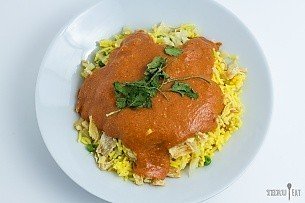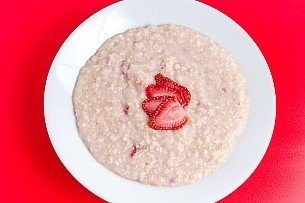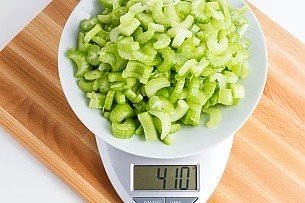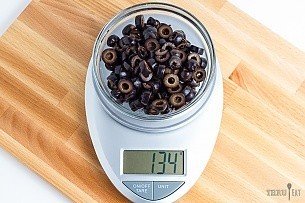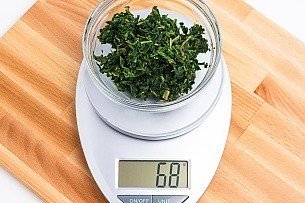Buying a dehydrator may seem like a daunting task, but it’s actually pretty easy. There are a wide range of options from various manufacturers that clock in at equally various price points; but they are vastly different in terms of features and options that it’s pretty easy to rule out one dehydrator for another.
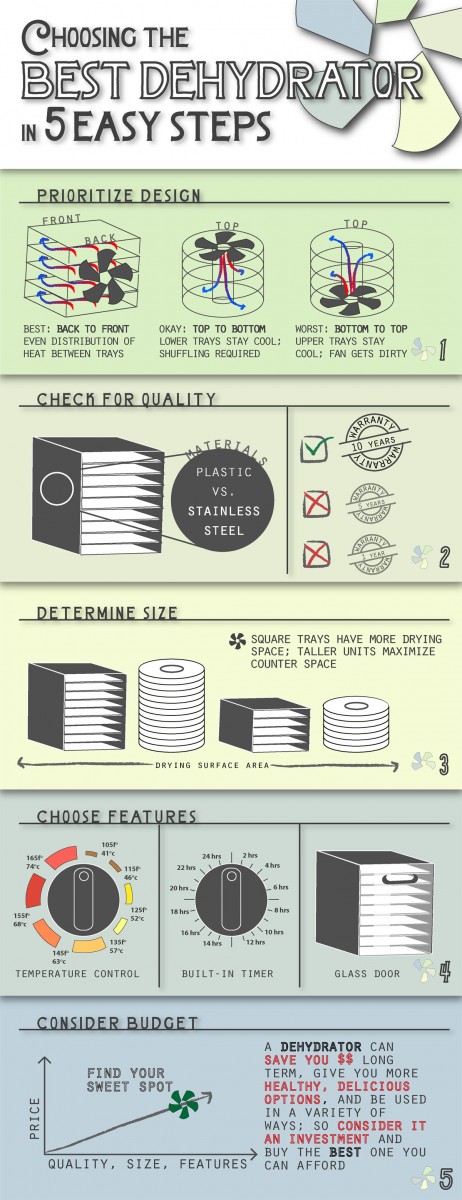
But before we get into figuring out what dehydrator might be the better choice, let’s take a step back.
Why should you get a dehydrator and do you really need one?
The honest answer is, “probably not.” For most people, a dehydrator is overkill. If the majority of your backpacking trips are 3-5 days or less, or you only camp a few days a year, then save your money.
However, if you frequently go on extended backpacking trips or thru hikes, or you camp often enough that you’re sick and tired of your usual meal plan, then a dehydrator could be a game changing money saver for you.
Also, if you have any dietary restrictions or if you’re a picky eater, a dehydrator will give you complete control of your meals while eliminating the worry of getting sick or triggering an allergy out on the trail.
Even if you fall into the category where buying a dehydrator would make sense, you need to ask yourself if it’s something you’ll really use. Why? Because it requires additional effort. While dehydrating is incredibly easy and has the potential to save you a lot of money, it’s not as easy as going to the store and picking up a couple Mountain Houses (unless you live in the middle of nowhere). You have to plan ahead, prep ingredients, and dry them before your trips. So keep in mind that a fair amount of forethought and effort is required.
To summarize:
| PROS | CONS |
|---|---|
| Make tasty unique meals that suit your taste | High upfront cost of dehydrator |
| Meals end up being cheaper | Requires planning, prep, and drying time |
| You only use ingredients you know and trust |
Now all you have to do is decide on a couple of things and figure out which one best suits you!
Prioritize Design
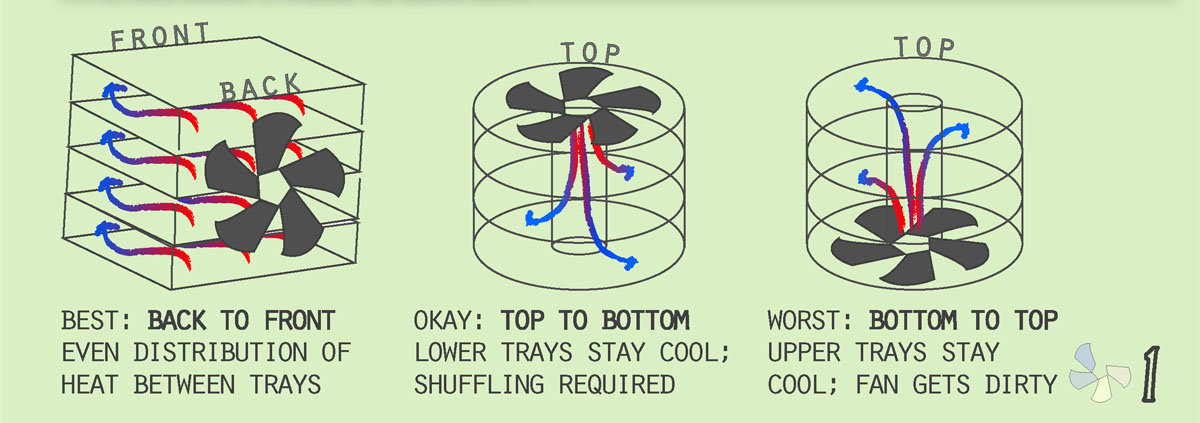
Not all dehydrators are the same. While the method of food dehydration is a practice that dates back thousands of years and only really requires heat and air movement, there are a number of modern day dehydrator designs that are more effective and convenient.
While almost all dehydrators have a fan and heating element (some only have heating elements and no fan), their placement varies between different manufacturers. The three principle placements are top, bottom, and side.
The placement of the fan and heating element greatly affects how evenly and quickly things will dry, as well as how easy it is to clean.
Starting with the worst, a dehydrator with a fan and heating element on the bottom like the Presto 06300. These are typically very affordable, in the $20-$30 range and they will get the job done. However, the location of the fan at the bottom of the unit means food crumbs tend to fall down into it. Over time, the fan gets caked in a sticky residue and occasionally large crumbs will get scorched on the heating element. These units also typically don’t have any temperature control; they’re simple on/off devices.
A better option is a dehydrator with a fan and heating element on the top, similar to the Nesco Snackmaster Pro. This design solves the dirty fan issue, and they typically have adjustable temperature control. The change in design and addition of temperature control usually means this type of dehydrator is a bit more expensive, somewhere in the neighborhood of $50-$80.
The best design in my opinion is by Excalibur, as it uses a horizontal fan and heating element, typically located in the rear of the dehydrator. It addresses all the issues above, but also offers more even drying. Air is allowed to freely circulate across all the trays, all at the same time. While the air cools down as it moves further away from the fan, it occurs evenly on all the trays simultaneously, whereas a dehydrator with a bottom or top mount fan has to force air through each tray. Subsequent trays add more and more airflow resistance and reduce the air temperature. By the time the air reaches the tray furthest away, it has significantly cooled and isn’t moving as fast. This results in the further trays taking longer to dry, not drying at all, or requiring you to manually rotate the trays.
All of the designs can and will dry food, but it’s worthwhile to think about the ones that will make your life the easiest or get the job done quicker.
Check for Quality
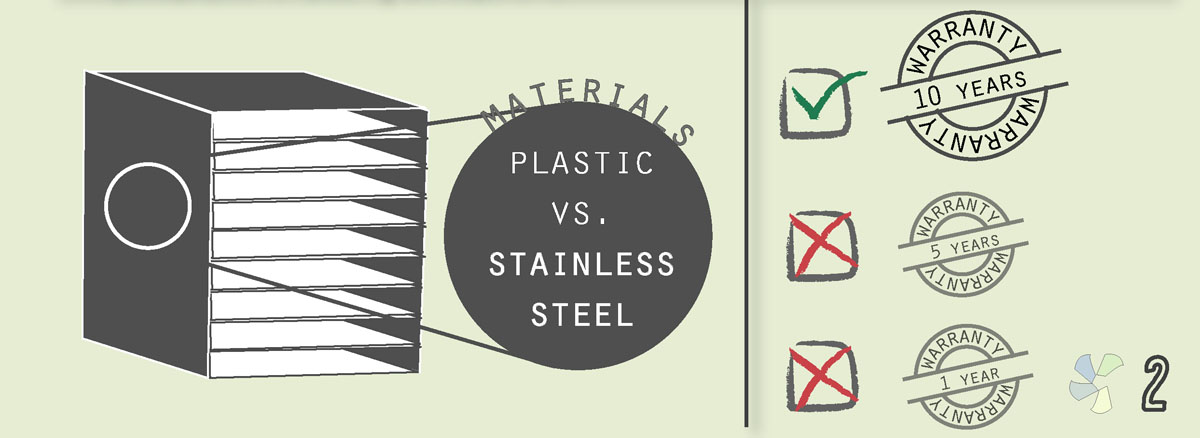
Assessing quality with regards to food dehydrators is tricky since the majority of dehydrators are made of plastic, so none of them are going to survive a nuclear blast. But some things to consider are that the Excalibur and Nesco are made in the USA, while the Presto is unspecified. I’ll let you draw your own conclusions. On top of that, some models like the Excalibur 3500B offer a 10 year warranty, while the Nesco and Presto both only offer a 1 year warranty. There’s an obvious discrepancy in what each manufacturer thinks about their product when one offers such a long warranty.
To take it to the next level, Excalibur has the D500CDSHD model, which has stainless steel trays instead of plastic ones. If you’re averse to heating your food on plastic then this is the only dehydrator with the stainless option, and it also comes with a 10 year warranty.
While Excalibur takes the cake on quality, it’s also significantly more expensive, but fret not! There’s the Excalibur 4-tray #2400 which is marginally cheaper than its brethren and packs a nice meet-you-in-the-middle 5 year warranty.
Determine Your Size
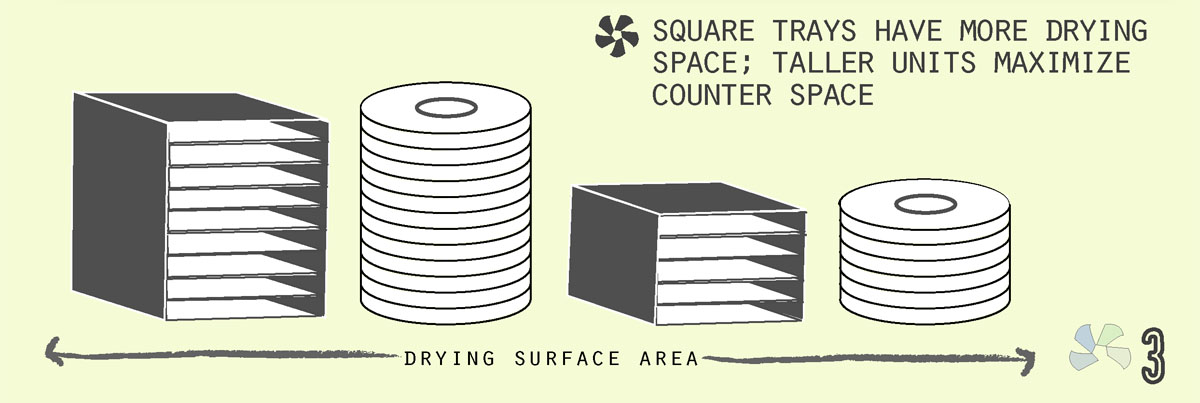
This might be the most important consideration of all, and is the most personal one.
First, there’s actual physical dehydrator dimensions. The round Nesco and Presto have a smaller countertop footprint but they’re usually taller since they use stacking trays. On the other hand, Excalibur dehydrators have a fixed numbers of trays but they’re square and have a larger footprint.
If you plan to leave your dehydrator out on the counter and you have plenty of space, then the Excalibur is a good option. However, if storage and counter space is at a premium you may consider the Nesco or Presto.
Second, there’s the size of the drying surface, or the amount of space available on the trays to hold your food. The Excalibur has 15”x15” square trays, which yields 1.5 square feet of drying space, multiple that by the number of trays (depending on the model); it’s an incredibly efficient design in terms of maximizing drying space.
The round dehydrators are typically 14” wide or thereabouts, which results in just a hair over 1 square feet of drying space. After taking into account the hole that exists in the center of the tray, it’s now less than 1 square feet.
However the Excalibur has a fixed number of trays, while the Nesco and Presto can both be expanded by purchasing additional trays and increasing the total drying area. But it should be noted that adding additional trays will increase the amount of time for things to dry and you will very likely have to rotate trays around to ensure even drying.
Choose Features
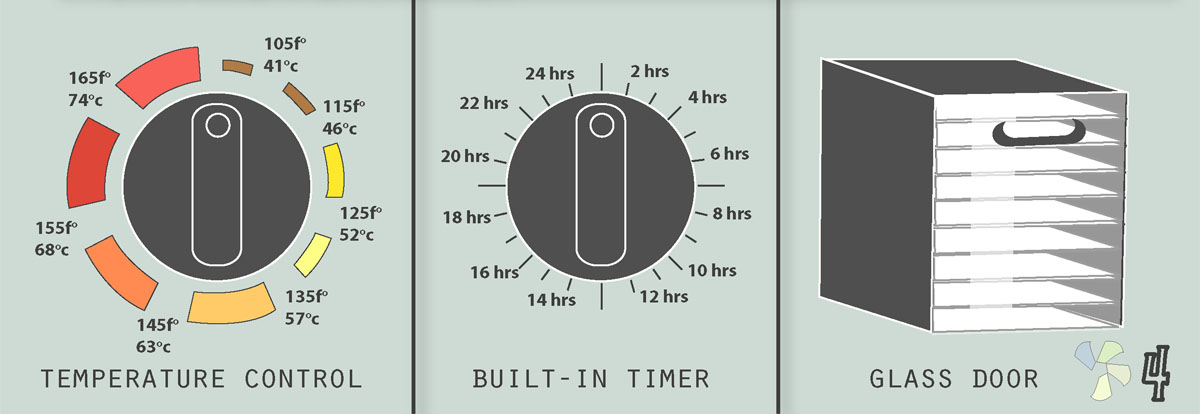
As mentioned above, the Nesco and Presto have the ability to expand by purchasing more trays to stack on top, they expand to 12 and 8 trays, respectively. That is a worthwhile feature if you find yourself needing to dehydrate a larger volume of food, or you’re not sure initially what your needs will be.
Another necessary feature is a timer, which will save on electricity by cutting off the machine even if you’re not home to do it.
Alternatively, you can purchase a plug-in outlet timer if you really want it to turn off after a certain amount of time.
More importantly there’s temperature control. To me, this is a make or break feature because it allows you to safely and properly dry a variety of things like herbs that require lower temperatures and meats that require higher temperature. Drying certain things at too high of a temperature can cause “case hardening” where the outside is dry and it keeps the inside from drying completely--this results in spoilage.
Then there are the nice-to-have-but-not-necessary features like a clear door, which is only found on select Excalibur models. It’s nice to see the progress of the drying, but it might not be worth the extra cost of a clear door. Certainly convenient, but that’s your decision to make.
Lastly, this isn’t actually an intended feature as much as it is a side effect of the design of the dehydrators. Sometimes you have to rotate trays to get more even drying, which helps speed up the total drying time. Rotating trays on a stackable Nesco/Presto requires you to shuffle trays up and down like a deck of cards. Whereas rotating trays on an Excalibur is simply rotating the tray 180 degrees and placing it back in its original slot. The latter method of tray rotation is significantly easier and only has to occur once or twice (if at all), the former may require multiple tray rotations depending the total number of trays.
Consider Your Budget
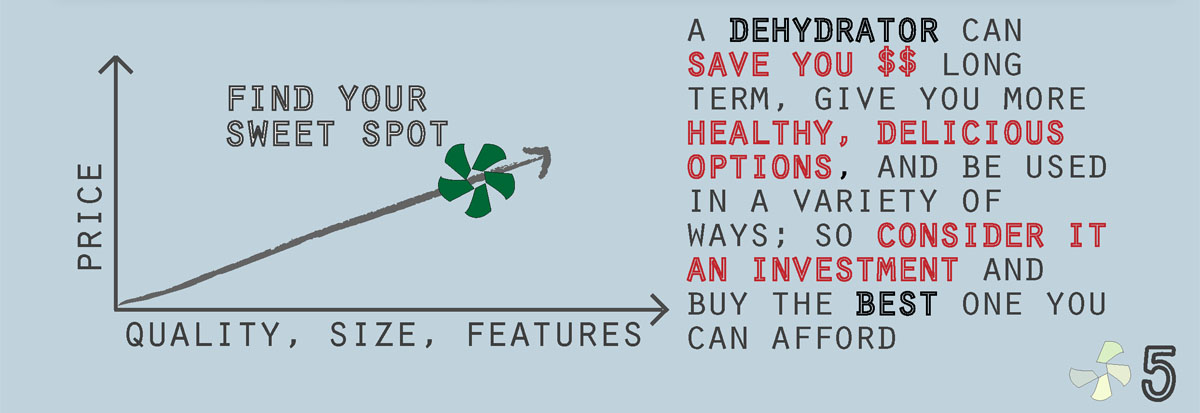
At the end of the day the only thing that matters is what you can afford. A food dehydrator is not a “need to have” piece of equipment for backpacking, it most definitely fits in the “nice to have” category. If you can’t afford one you can just use your oven or even build a solar dehydrator to dry most food items. However, if your finances allow for it, choose the one that will allow you to make the largest amount of food you think you’ll want to make, in the shortest amount of time, with the least hassle.
Summary
I am of the opinion that Excalibur dehydrators are hands down the best, followed by the Nesco, and then the Presto. There are a number of other brands but these three are pretty ubiquitous and very easy to find.
Given enough time and effort, you could probably dry food with a lighter and fanning your hand. This is my way of saying they’ll all get the job done, but the Excalibur will get it done quicker and with less mucking about, though it does come at an increased cost.
I personally have a 5 tray Excalibur with a timer and temperature control. If I fill all 5 trays, I can typically make 7-10 meals, depending on the serving size and the bulkiness of the item being dried. Occasionally I find myself wishing I had gotten a 9 tray, but it’s an issue easily overcome by just drying in batches.
Here’s a breakdown of each model:
| Excalibur 3526TB | Nesco Snackmaster Pro FD-75A | Presto 06300 | |
|---|---|---|---|
| Cost | $$$ | $$ | $ |
| Number of Trays | 5 | 5 | 4 |
| Countertop Footprint | 323 square inches | 154 square inches | 154 square inches |
| Drying Surface Area | 8 square feet | 5 square feet | 4 square feet |
| Total Watts | 440 | 600 | 600 |
| Timer | Yes | No | No |
| Temperature Control | Yes | Yes | No |
| Expandable Trays | No | Yes, up to 12 | Yes, up to 8 |
| Warranty | 10 Year | 1 Year | 1 Year |
| Current Price |
